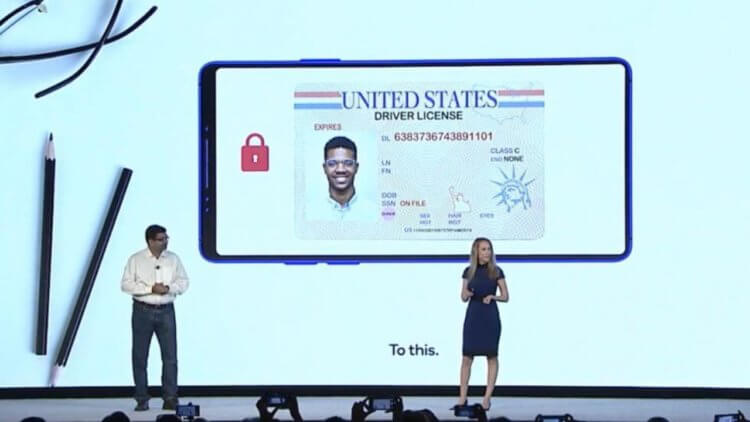Thanks to smartphones, most of the things we are used to have moved to the digital space. Telephone directories, photographs, calculators, calendars, diaries and bank cards – all this and much more can be accommodated by devices that fit in a trouser pocket. Even boarding passes for a plane are now stored in a virtual wallet installed on a smartphone, which greatly simplifies pre-boarding activities. But for some reason, documents still have to be carried in their physical form. As they say, how long?

Digitization of documents by smartphones becomes a reality
Samsung has introduced an eID interface that will allow digital copies of ID cards to be stored in the memory of branded smartphones. Thanks to him, users will be able to pass verification without using physical documents.
Digitization of documents by smartphone

Thanks to the digitization of documents, such checks will become a thing of the past.
The eID system is based on NFC technology. It is she who will allow the smartphone to scan an ID card with built-in RFID and correctly recognize it, saving it in memory. Then it will be sent for verification to the competent authorities, and only after that its digital copy can be used.
To present an identity card, you just need to put your smartphone to the reader, which, as a rule, is located on turnstiles or in the form of a compact scanner in the hands of a customs officer.
For security reasons, all documents digitized using eID will be stored on the device in encrypted form, and the reader will receive only a token with a written set of information. Thus, it will most likely be impossible to intercept confidential data.
But since not all Samsung smartphones have secure storage, eID will only work on new devices from the brand, starting with the Galaxy S20. This is due to the fact that only this model is equipped with a special chip that forms a separate space inside the storage, which cannot be hacked.
The safest Samsung smartphone
Since the document is stored on the device in encrypted form, it is logical that it will not be possible to look at it just like that, as we look in a passport. For this reason, you will no longer be able to show such a document, for example, to a police officer on the street. But this is not required from eID. The purpose of Samsung's document digitization system is to facilitate the process of boarding an airplane or crossing a border, when it is completely out of hand to fiddle with documents.

It will be enough just to put the smartphone to the reader and cross the border
The eID will be launched in different countries gradually. The first country where the new system became available was Germany. There, Samsung has already passed the necessary checks and received a quality certificate, which allowed it to digitize documents that can later be used to verify identity.
It is then planned to obtain similar approvals across all European countries, which should not be a daunting task given that Samsung's system is eIDAS compliant. This is a unified standard for digitizing documents used in the European Union, which means that there should be no problems with certification.
It is still difficult to say whether eID will be available in Russia, but since we have been issuing documents for a long time that contain RFID chips certified by ICAO (International Civil Aviation Organization), there is nothing impossible in this. For eID, this should be enough, and the Russian customs authorities (and others, by the way, too) will not have to introduce new standards for document verification using the existing infrastructure. It will be enough to just slightly adjust the documentation governing the digitization of documents and strive into the future.
